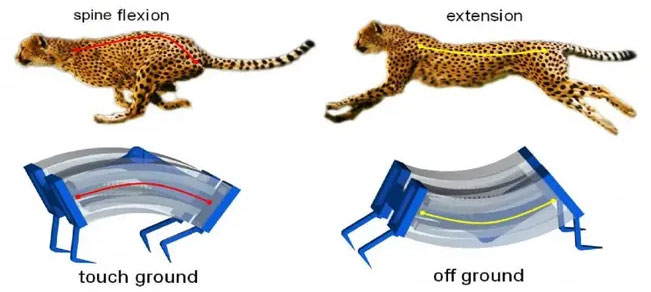Do you remember the Jamaican sprinter, Usain Bolt, the only living athlete who holds 8 Olympic gold medals? Although Bolt retired in 2017, he still holds the title of the fastest man on Earth, with a speed of approximately 44 km/h, completing 100 meters in just 9.58 seconds.
Such speed seems incredible to us; however, in reality, it does not match the maximum speed of a domestic cat (48 km/h). When faced with a cheetah (up to 130 km/h) or a pronghorn antelope (nearly 100 km/h), Bolt would only be left in the dust.
Many believe that the key factor determining the speed of a person or an animal is the size of their muscle groups: the stronger, the faster. This conclusion is only true in certain cases, but in the natural race, an elephant will never outrun an antelope. So, what is the real key factor?
Recently, a group of scientists led by biomechanist Michael Günther from the University of Stuttgart designed a complex model, including 40 different parameters such as body size, leg length, muscle density, running surface, and physical impact, to answer this question.

Usain Bolt – The fastest man on Earth.
Decisive Factors in Winning
“The basic idea is to delve into two limiting factors of speed. The first is air resistance – the opposing force acting on each leg as we move forward. Air resistance is not influenced by mass, making it a key factor limiting speed in smaller animals. According to this theory, if you weigh more, you will run faster,” stated Robert Rockenfeller, a mathematician at the University of Koblenz-Landau and co-author of the study.
The second factor is inertia – the resistance an object faces when accelerating from a resting state – which increases with mass. According to Rockenfeller, there is a time limit for an animal to accelerate its own mass: the time between when a foot is placed parallel to the ground and when it leaves the ground. This characteristic is very limiting in larger animals, as their greater mass results in a shorter acceleration time compared to smaller animals.
The results show that the optimal body mass to overcome air resistance and inertia lies around 50 kg. This is the average weight of both cheetahs and pronghorn antelopes. A domestic cat weighing 100 kg could run as fast as 74 km/h. A spider of similar weight, if its legs are strong enough to support its body, could reach speeds of 56 km/h. However, a person weighing 100 kg can only achieve 37 km/h.
But body size is not the only characteristic influencing the maximization of speed. Leg length is also important. Animals with longer legs can push their bodies further forward, extending the time their body mass is accelerating.
Why Do Four-Legged Animals Run Faster Than Humans?
It’s not just because we have only two legs; it’s because the human body stands perpendicular to the ground when upright, which is a position that bears the full force of gravity. We evolved to walk on two legs to prioritize balance and stability over speed. Four-legged animals have a flexible skeletal structure that allows them to flex and extend smoothly, helping them maintain ground contact longer, therefore, they can certainly run faster than humans.

Four-legged animals have a flexible skeletal structure.
What about muscle fatigue?
According to Günther, it does not play a significant role. Any animal can accelerate to at least 90% of its maximum speed before running out of fuel. “It makes sense to call it biomechanics rather than fuel depletion. Organisms have evolved to overcome this, but this hypothesis needs further verification,” stated Carl Cloyed, an ecologist at Alabama’s Dauphin Island Sea Lab, who specializes in animal movement.
However, many scientists note that verifying this hypothesis requires capturing live animals, observing them in a laboratory environment, or reviewing footage of their sprints. The best method would be to implant sensors into their muscles to monitor them in their natural habitat. However, this would face ethical criticism as well as logistical challenges.
Cloyed wants to observe these conclusions in animals living in the air and underwater. “If this explanation is correct, then it should also hold true in other environmental mediums,” he said.
This research plays a crucial role in many fields. For ecologists, understanding how speed limitations affect population formation, habitat selection, and community dynamics is invaluable. In robotics and biomedical engineering, these insights could lead to optimizing the speed of rehabilitation machines or prosthetic limbs.
Perhaps in the future, someone will break Bolt’s record, but the biomechanics of sprinting demonstrate that our bodies have evolved to the physical limits of humanity. The title of the fastest runner held by “Lightning” Bolt or anyone else can only apply to humans, while in the animal kingdom, we stand no chance of winning.

















































